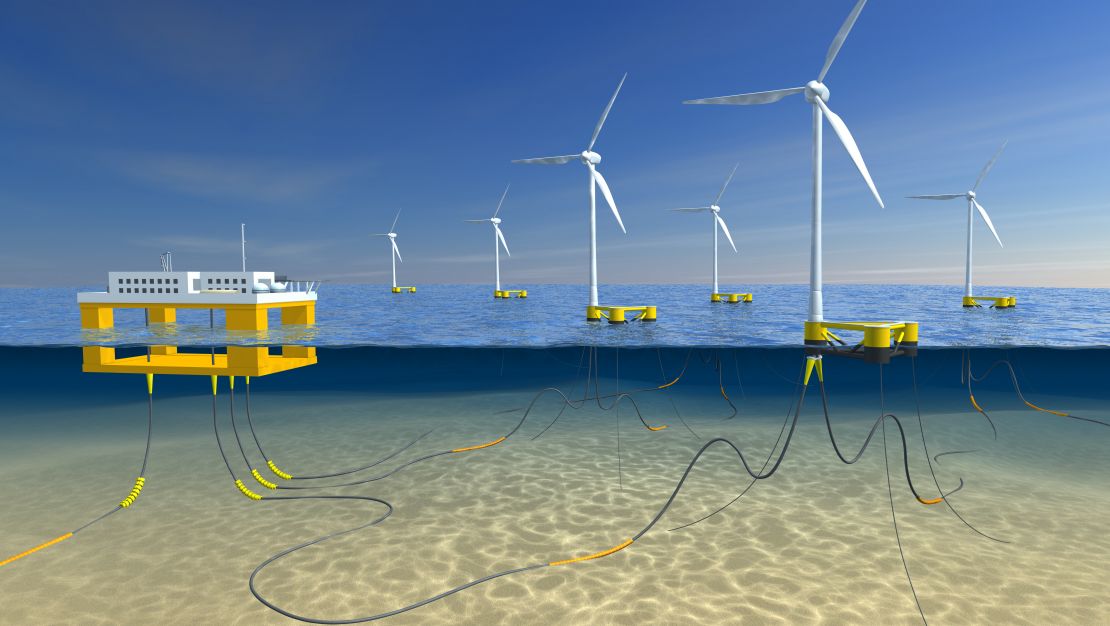Offshore Wind's High Price Tag: A Barrier To Investment

Table of Contents
High Capital Expenditure (CAPEX) in Offshore Wind Farms
The exorbitant capital expenditure (CAPEX) associated with offshore wind farms is a primary driver of high costs. Several factors contribute to this:
-
Turbine Costs: Offshore wind turbines are significantly larger and more technologically advanced than their onshore counterparts, leading to substantially higher manufacturing and transportation costs. The increasing trend towards larger turbine capacities, while boosting energy output, also increases the individual unit price.
-
Foundation and Substructure Costs: The depth of the water and the nature of the seabed significantly influence foundation design and construction. Deep-water installations require specialized and expensive foundations, such as monopiles, jackets, or floating structures, adding considerably to the overall project cost. Challenging soil conditions can further complicate and increase costs.
-
Installation and Commissioning Costs: Installing offshore wind turbines requires specialized vessels, highly skilled personnel, and complex logistical planning. Weather conditions often lead to delays and increased costs. The sheer scale and remoteness of offshore wind farms add layers of complexity to installation and commissioning, significantly impacting costs.
-
Grid Connection Costs: Connecting offshore wind farms to the onshore electricity grid often involves laying long submarine cables and building new onshore substations. The distance from shore and the need for robust and reliable infrastructure contribute to high grid connection costs, sometimes representing a significant portion of the total project expenditure.
Compared to other renewable energy sources like solar and onshore wind, offshore wind projects consistently demonstrate significantly higher CAPEX. However, economies of scale and ongoing technological advancements, such as improvements in turbine design and installation techniques, are gradually driving down these costs.
Operational Expenditure (OPEX) Challenges in Offshore Wind
Beyond the initial capital investment, operational expenditure (OPEX) represents a substantial ongoing cost for offshore wind farms. These costs include:
-
Maintenance and Repair: The harsh marine environment subjects offshore wind turbines to considerable wear and tear. Maintaining and repairing these turbines in remote locations requires specialized vessels, skilled technicians, and sophisticated equipment, resulting in substantial operational expenses.
-
Crew Transportation and Accommodation: Transporting crews to and from offshore wind farms, often requiring specialized vessels and potentially on-site accommodation, adds significant costs to the operational budget.
-
Insurance and Risk Management: Offshore wind farms are exposed to extreme weather events, posing significant risks to the infrastructure and personnel. High insurance premiums reflect this elevated risk profile.
-
Monitoring and Data Analysis: Real-time monitoring of turbine performance and environmental conditions requires sophisticated technology and expertise, adding to the operational costs. This data-driven approach to optimizing performance is essential but expensive.
OPEX significantly impacts the overall lifecycle cost of offshore wind projects. Strategies for minimizing OPEX include innovative designs that reduce maintenance needs, the development of more durable and reliable components, and improved predictive maintenance techniques leveraging data analytics.
Regulatory Hurdles and Permitting Delays
Navigating the complex regulatory landscape is a major challenge for offshore wind development. The process is often lengthy and fraught with delays, further escalating project costs:
-
Environmental Impact Assessments and Permits: Thorough environmental impact assessments are required to evaluate the potential effects on marine ecosystems, bird migration patterns, and other environmental factors. Securing the necessary permits can be a time-consuming and complex process.
-
Grid Connection Approvals and Transmission Infrastructure Development: Securing approvals for grid connections and developing the necessary onshore and offshore transmission infrastructure can involve significant delays and regulatory hurdles.
-
Stakeholder Engagement and Community Consultation: Effective stakeholder engagement and community consultation are crucial to address concerns from various groups, including fishing and tourism industries. This process can be time-consuming and require considerable resources.
-
Navigational Safety and Security Concerns: Ensuring navigational safety and security around offshore wind farms requires careful planning and coordination with relevant authorities.
These delays significantly impact project financing and contribute to increased costs. Streamlining the permitting process, improving inter-agency coordination, and fostering proactive stakeholder engagement are vital to reducing regulatory hurdles and accelerating project development.
Financing Offshore Wind Projects: The Risk-Return Dilemma
Securing financing for high-cost offshore wind projects presents a significant challenge:
-
High Upfront Investment Requirements: The substantial capital expenditure required for offshore wind projects necessitates significant upfront investment, often exceeding the capacity of individual investors or developers.
-
Long Project Development Timelines and Uncertainties: The lengthy development timelines associated with offshore wind projects introduce uncertainties regarding future costs and revenues, making investors hesitant.
-
Sensitivity to Interest Rate Fluctuations and Market Risks: Offshore wind projects are sensitive to fluctuations in interest rates and market conditions, posing financial risks to investors.
-
Competition for Capital: Offshore wind projects compete with other renewable energy and infrastructure projects for limited capital, further hindering their ability to secure financing.
Government subsidies, tax incentives, and risk-mitigation strategies, such as revenue guarantees or power purchase agreements, are essential to attract investment and de-risk these projects.
Conclusion: Addressing the High Price Tag of Offshore Wind
The high cost of offshore wind energy, driven by significant CAPEX and OPEX, coupled with regulatory hurdles and financing challenges, represents a considerable barrier to its widespread adoption. However, the environmental benefits of offshore wind are undeniable, making it a crucial component of a sustainable energy future. To unlock the vast potential of this clean energy source, concerted efforts are needed to drive down costs through innovation, technological advancements, and supportive policy frameworks. Investing in research and development to drive down the cost of offshore wind is crucial for a sustainable energy future. Let's work together to overcome the high price tag of offshore wind and unlock its vast potential.

Featured Posts
-
 Gibonni Intimno Predstavljanje Knjige Drvo I Najava Koncerta U Subotici
May 04, 2025
Gibonni Intimno Predstavljanje Knjige Drvo I Najava Koncerta U Subotici
May 04, 2025 -
 Security Row Prince Harry Reveals King Charles Has Cut Off Communication
May 04, 2025
Security Row Prince Harry Reveals King Charles Has Cut Off Communication
May 04, 2025 -
 The 2024 Singapore Election A Turning Point
May 04, 2025
The 2024 Singapore Election A Turning Point
May 04, 2025 -
 Will Fox 2 Simulcast Detroit Red Wings And Tigers Games
May 04, 2025
Will Fox 2 Simulcast Detroit Red Wings And Tigers Games
May 04, 2025 -
 Bradley Cooper And Will Arnett Behind The Scenes Of Is This Thing On Nyc Shoot
May 04, 2025
Bradley Cooper And Will Arnett Behind The Scenes Of Is This Thing On Nyc Shoot
May 04, 2025
